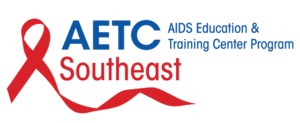
Agenda & Resources
Morning Agenda
8:00 – 8:15
Program Overview
Clare Bolds and Cody Chastain, MD
8:15 – 8:45
Hepatitis A Virus: Old Things Made New
Cody Chastain, MD
8:45 – 9:30
C. difficile: When Your #2 Becomes a #3: Review and Guidelines Update
Matthew Greene, MD
9:30 – 10:15
Hepatitis C Virus: Fresh Take Gone Stale?
Cody Chastain, MD
10:15 – 10:30
Break
10:30 – 11:30
Changing Landscape of Antimicrobial Resistance: Primary Care Update from Antimicrobial Stewardship Perspective
George Nelson, MD
Afternoon Agenda
11:30 – 12:30
The Updated Antibiotic Armamentarium for When Bugs Go Bad
Whitney Nesbitt, PharmD, BCPS
12:30 – 1:15
Lunch
1:15 – 2:15
Update on Immunizations
H. Keipp Talbot, MD, MPH
2:15 – 3:15
HIV Update: Epidemiology, Pathogenesis, Treatment and PrEP
Steve Raffanti, MD, MPH
3:15 – 3:30
Break
3:30 – 4:30
Animal Bites and Rabies
Patty Wright, MD
Resources
Click a title below to download the Presentation slides in PDF.
Hepatitis A Virus: Old Things Made New
Presented By: Cody Chastain, MD
Objectives:
- Describe the epidemiology of hepatitis A virus (HAV) in the US, including recent epidemics in CA and TN;
- Identify the method of and risk factors for HAV transmission;
- Recognize clinical symptoms and signs of HAV;
- Recommend appropriate prevention strategies, including immunization and post-exposure prophylaxis.
C. difficile: When Your #2 Becomes a #3: Review and Guidelines Update
Presented By: Matthew Greene, MD
Objectives:
- Case
- An aside and some principles
- History and Pathophysiology
- “Colonization resistance”
- Epidemiology
- Risk factors
- Emergence of NAP1
- Antimicrobial Stewardship
- Diagnosis
- Symptoms and testing
- Treatment
Hepatitis C Virus: Fresh Take Gone Stale?
Presented By: Cody Chastain, MD
Objectives:
- Recognize that HCV remains a major public health and individual health concern.
- Identify interventions related to HCV within his/her practice and/or community.
- Commit to a personal change re: the HCV continuum of care.
Changing Landscape of Antimicrobial Resistance: Primary Care Update from Antimicrobial Stewardship Perspective
Presented By: George Nelson, MD
Objectives:
- Overview of burden of common antimicrobial resistance (AMR) patterns
- Methicillin Resistant Staphylococcus aureus (MRSA)
- Vancomycin Resistant Enterococcus (VRE)
- Extended Spectrum β lactamase (ESBL), Amp-C, FQ-R
- Common syndromes with multidrug resistance (MDR)
- Initial evaluation
- Antibiotic stewardship perspective
- Bried update on emerging drug resistance
The Updated Antibiotic Armamentarium for When Bugs Go Bad
Presented By: Whitney Nesbitt, PharmD, BCPS
Objectives:
- Identify pathogens commonly associated with hospital-acquired infections
- Discuss antibiotics recently introduced to the market which are able to treat multidrug-resistant pathogens
- Determine potential applications of the newer antibiotics
Update on Immunizations
Presented By: H. Keipp Talbot, MD, MPH
Objectives:
- Ask Questions
- Will only talk about adults (okay I talk about teenagers once)
- Vaccines should be given and not offered
HIV Update: Epidemiology, Pathogenesis, Treatment and PrEP
Presented By: Steve Raffanti, MD, MPH
Objectives:
- Describe current epidemiological trends in the HIV epidemic
- Describe key points in HIV pathogenesis
- Describe current treatment standards
- Describe PrEp
Animal Bites and Rabies
Presented By: Patty Wright, MD
Objectives:
- To inform participants about the treatment of common animal bites
- To discuss the indications for and administration of pre-and post-exposure prophylaxis for rabies
- To familiarize participants with the presentation and potential treatment options for active rabies infection
